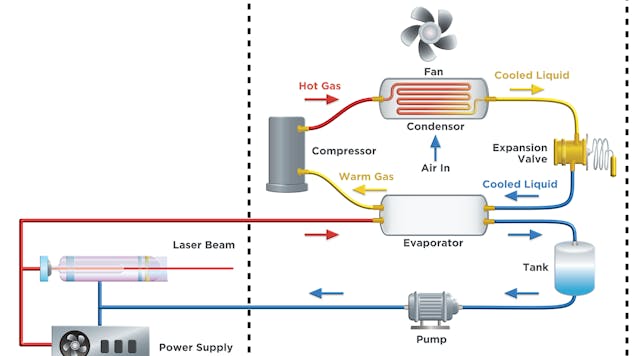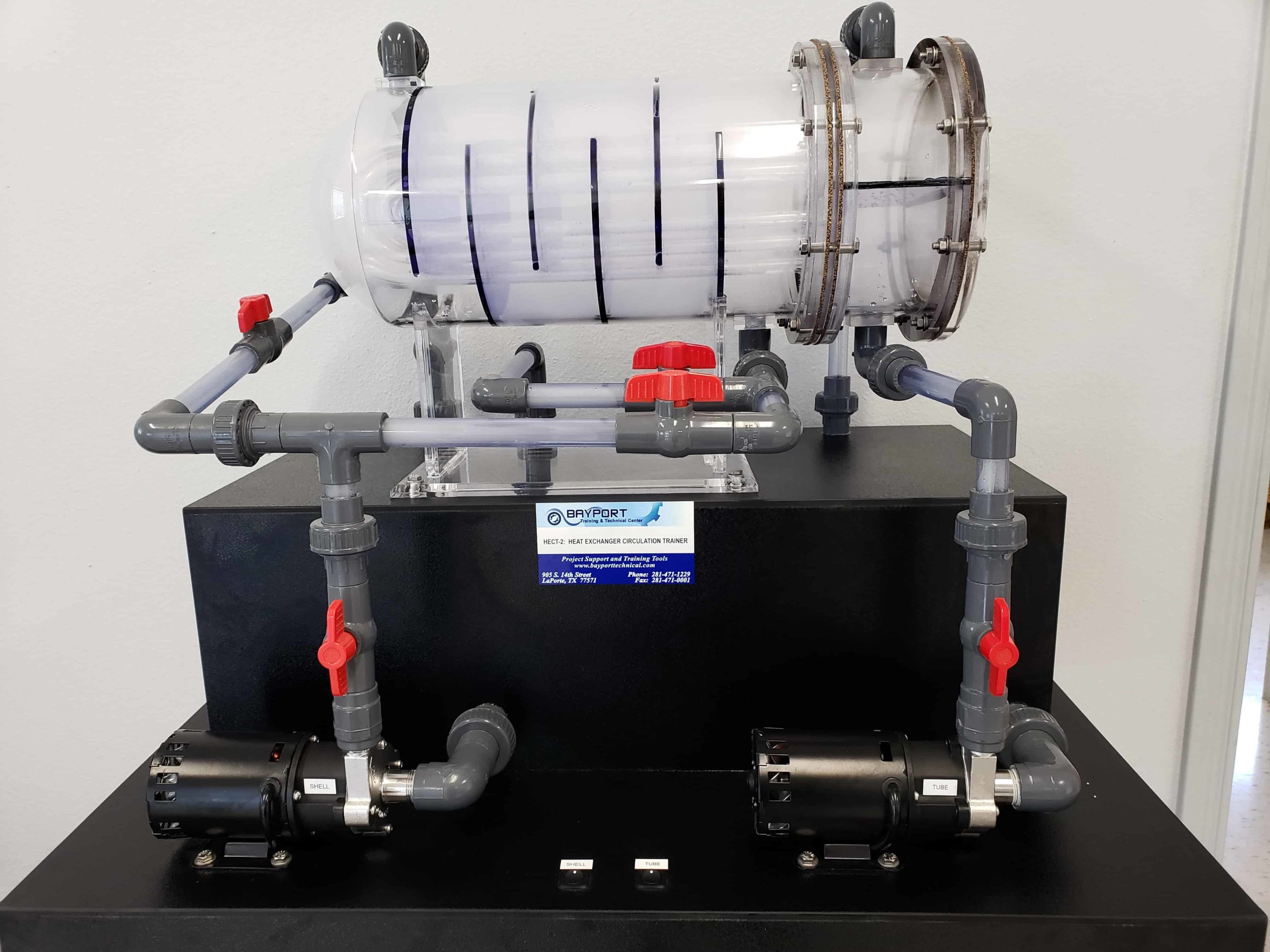How DVS Heat Transfer Systems Harness Advanced Materials to Maximize Thermal Conductivity
Wiki Article
The Duty of Heat Transfer Solutions in Sustainable Energy Solutions for the Future
Heat transfer systems are necessary in the pursuit for lasting energy solutions. They optimize thermal power monitoring, enhancing the efficiency of renewable technologies. By employing devices like convection, conduction, and radiation, these systems decrease power losses. Their role in solar thermal and geothermal applications is specifically considerable. As advancements emerge, the possibility for additional advancements raises essential questions concerning future power strategies. What developments will shape the landscape of sustainable power?Recognizing Heat Transfer Solutions

The Value of Thermal Power Administration
Efficient thermal energy management is crucial for making best use of energy effectiveness and minimizing waste in numerous systems. By controling temperature level and maximizing Heat transfer procedures, companies can noticeably lower energy intake and operational prices. Effective administration includes the execution of innovative innovations and practices that keep an eye on and regulate thermal conditions within systems, ensuring that power resources are utilized efficiently. Additionally, correct thermal power monitoring adds to decreasing greenhouse gas discharges, straightening with global sustainability goals. It likewise enhances system integrity and efficiency, bring about enhanced product high quality and longer equipment lifespan. Eventually, prioritizing thermal power management is an essential action towards developing extra lasting power solutions and promoting an accountable strategy to power consumption in commercial and household contexts.Applications of Heat Transfer in Renewable Resource
While various sustainable energy sources assure sustainability, the efficient application of Heat transfer plays a vital role in their performance. In wind energy systems, Heat transfer is used for turbine element cooling, boosting performance and longevity. Geothermal energy relies on reliable Heat exchange in between the earth's subsurface and the fluid flowing in the system, taking full advantage of power extraction. Biomass power procedures also profit from Heat transfer, as it helps in converting natural products into functional fuel with pyrolysis and gasification. Furthermore, in hydropower, maintaining perfect temperatures in reservoirs can enhance energy result. Each of these applications demonstrates the essential significance of Heat transfer systems in improving sustainable energy modern technologies, ultimately adding to a much more sustainable power future.Enhancing Solar Thermal Power Efficiency
As solar thermal power systems remain to advance, boosting their performance has become necessary for making best use of power output. Advances in Heat transfer modern technologies, such as boosted thermal storage products and ingenious Heat exchangers, play a significant function in boosting performance. By making use of sophisticated materials that have remarkable thermal conductivity, systems can transfer and catch Heat extra successfully. In addition, incorporating monitoring systems that adhere to the sun's course guarantees that collection agencies obtain perfect solar exposure throughout the day. Making use of nanotechnology in solar absorbers can better raise power absorption rates. Furthermore, integrating automated control systems aids regulate temperatures and handle power circulation efficiently, leading to decreased losses and boosted total system performance. These enhancements lead the way for even more sustainable solar thermal energy solutions in the future.Geothermal Heating: A Sustainable Service
Geothermal heating presents a sensible choice for sustainable energy, using substantial ecological advantages through lowered greenhouse gas emissions. Its performance and cost-effectiveness make it an attractive option to typical home heating systems. However, challenges associated to implementation must be addressed to optimize its potential effect.Ecological Advantages of Geothermal
Typical heating methods add substantially to greenhouse gas emissions, geothermal home heating provides a compelling option that reduces ecological influence. By using the Earth's interior Heat, geothermal systems utilize a renewable power resource, noticeably lowering reliance on fossil fuels. This approach generates minimal carbon emissions, making it a cleaner option for business and domestic heating. Furthermore, geothermal systems promote energy effectiveness, as they require less energy compared to conventional home heating systems. DVS Heat Transfer Systems. The usage of geothermal energy likewise helps in minimizing air contamination, improving neighborhood air quality and public health and wellness. As a lasting solution, geothermal home heating supports environment change mitigation initiatives, placing itself as a crucial part in the shift in the direction of a greener futurePerformance and Cost-Effectiveness
Just how does geothermal heating determine up in regards to efficiency and cost-effectiveness compared to conventional heating unit? Geothermal heating shows remarkable efficiency, typically attaining a coefficient of efficiency (COP) of 3 to 5, meaning it produces 3 to 5 units of Heat for every single system of electrical energy consumed. This effectiveness translates right into reduced operating expense, particularly in regions with steady geothermal sources. First installment prices can be greater than conventional systems; nonetheless, long-lasting financial savings on energy expenses and minimized upkeep expenditures can counter these upfront financial investments. Additionally, several governments incentivize geothermal systems via rebates and tax obligation credits, boosting their cost-effectiveness. Overall, geothermal heating becomes a lasting and financially sensible alternative to more standard heating options.Application Challenges and Solutions
Numerous challenges can hinder the widespread execution of geothermal furnace, in spite of their clear advantages as a sustainable energy remedy. High preliminary setup expenses typically deter investors and home owners, making financing a considerable barrier. Furthermore, the geographical restrictions of appropriate geothermal sites restrict ease of access in particular areas. Neighborhood guidelines and allowing processes can additionally make complex project growth, resulting in hold-ups. Public recognition and understanding of geothermal systems continue to be low, impeding acceptance. To address these challenges, targeted education and learning projects can boost public knowledge, while government rewards might relieve financial worries. Teaming up with local authorities to streamline regulations may assist in smoother project authorizations, ultimately promoting the adoption of geothermal home heating as a practical, sustainable power option.Developments in Heat Transfer Technologies
Technologies in Heat transfer modern technologies play a crucial duty in enhancing power performance and sustainability. Advanced Heat exchangers and phase modification products are at the leading edge of these growths, offering considerable renovations in thermal administration. These innovations check out here not only maximize energy usage yet likewise add to decreasing ecological influence in numerous applications.Advanced Heat Exchangers
Advanced Heat exchangers play a crucial function in improving energy efficiency across various applications in sustainable power options. These tools Home Page help with the transfer of Heat between two or even more fluids, considerably lowering power usage in procedures such as industrial home heating, cooling, and power generation. Advancements in products and style, such as the use of nanofluids and portable setups, have resulted in improved thermal efficiency and reduced dimension demands. Additionally, innovations in digital surveillance and control systems permit maximized procedure, additional boosting effectiveness. By reducing waste Heat and taking full advantage of energy recuperation, advanced Heat exchangers add to reduce carbon impacts and support the change towards eco-friendly modern technologies. Their continued growth is important for attaining global power sustainability objectives.
Stage Change Products
The assimilation of phase change products (PCMs) right into Heat transfer innovations stands for a substantial development in energy management and efficiency. PCMs take in and launch thermal power throughout their phase changes, making it possible for effective temperature policy in structure products and power systems. By saving excess Heat during top durations and launching it when need boosts, visit this page PCMs contribute to load shifting and power conservation - DVS Heat Transfer Systems. This ability improves the efficiency of renewable resource systems, specifically in solar thermal applications. Additionally, PCMs can improve the thermal comfort of indoor settings, lowering dependence on conventional home heating and cooling approaches. As innovations in PCM formulations remain to emerge, their role in sustainable power options is positioned to grow, providing promising avenues for future study and application
Future Prospects for Heat Transfer in Sustainable Energy
As the demand for sustainable energy options proceeds to rise, the role of Heat transfer systems is coming to be increasingly critical in forming future innovations. Technologies in styles and products are expected to enhance effectiveness in Heat transfer, decreasing power losses in numerous applications. The integration of advanced thermal storage systems, such as phase modification materials and thermochemical storage, will certainly make it possible for far better monitoring of power sources. Study into nanofluids and biomimetic Heat exchangers may further enhance thermal efficiency. In addition, the fostering of clever modern technologies will certainly permit real-time surveillance and flexible control of Heat transfer procedures. These improvements are positioned to substantially add to the total performance and sustainability of power systems, leading the method for a much more energy-efficient future.Often Asked Questions
How Can People Apply Heat Transfer Solution in your home?

Individuals can apply Heat transfer systems at home by setting up energy-efficient devices, utilizing radiant heat, and enhancing insulation. These steps enhance power performance, minimize costs, and advertise sustainable methods in household environments.

What Are the Expenses Related To Mounting Heat Transfer Solutions?
The costs related to setting up Heat transfer systems vary widely, usually including tools, installation labor, and maintenance. Factors such as system kind, home size, and neighborhood policies substantially affect the general expense included.Are There Federal Government Motivations for Heat Transfer System Installations?
Federal government rewards for Heat transfer system installations differ by region and can consist of tax obligation gives, credits, and refunds. These monetary benefits aim to motivate adoption, inevitably promoting energy effectiveness and reducing environmental impact within communities.How Do Heat Transfer Equipments Impact Energy Costs?
Heat transfer systems notably influence power costs by enhancing energy performance. By boosting the transfer of Heat, these systems decrease power intake, causing lower utility expenses and producing an extra lasting approach to energy monitoring.What Maintenance Is Needed for Heat Transfer Equipments?
Maintenance for Heat transfer systems includes routine evaluations, cleaning of elements, examining liquid degrees, guaranteeing proper insulation, and replacing worn parts. These tasks aid maintain effectiveness, avoid malfunctions, and lengthen the system's functional life-span.These systems assist in the motion of thermal energy from one tool to one more, enabling the transfer of Heat for heating, energy, or cooling generation functions. Geothermal energy relies on efficient Heat exchange in between the earth's subsurface and the liquid circulating in the system, maximizing power removal. Furthermore, geothermal systems advertise power effectiveness, as they call for less energy contrasted to standard heating systems. Advanced Heat exchangers play an important duty in enhancing energy effectiveness across various applications in sustainable energy solutions. Heat transfer systems notably influence energy bills by enhancing power effectiveness.
Report this wiki page